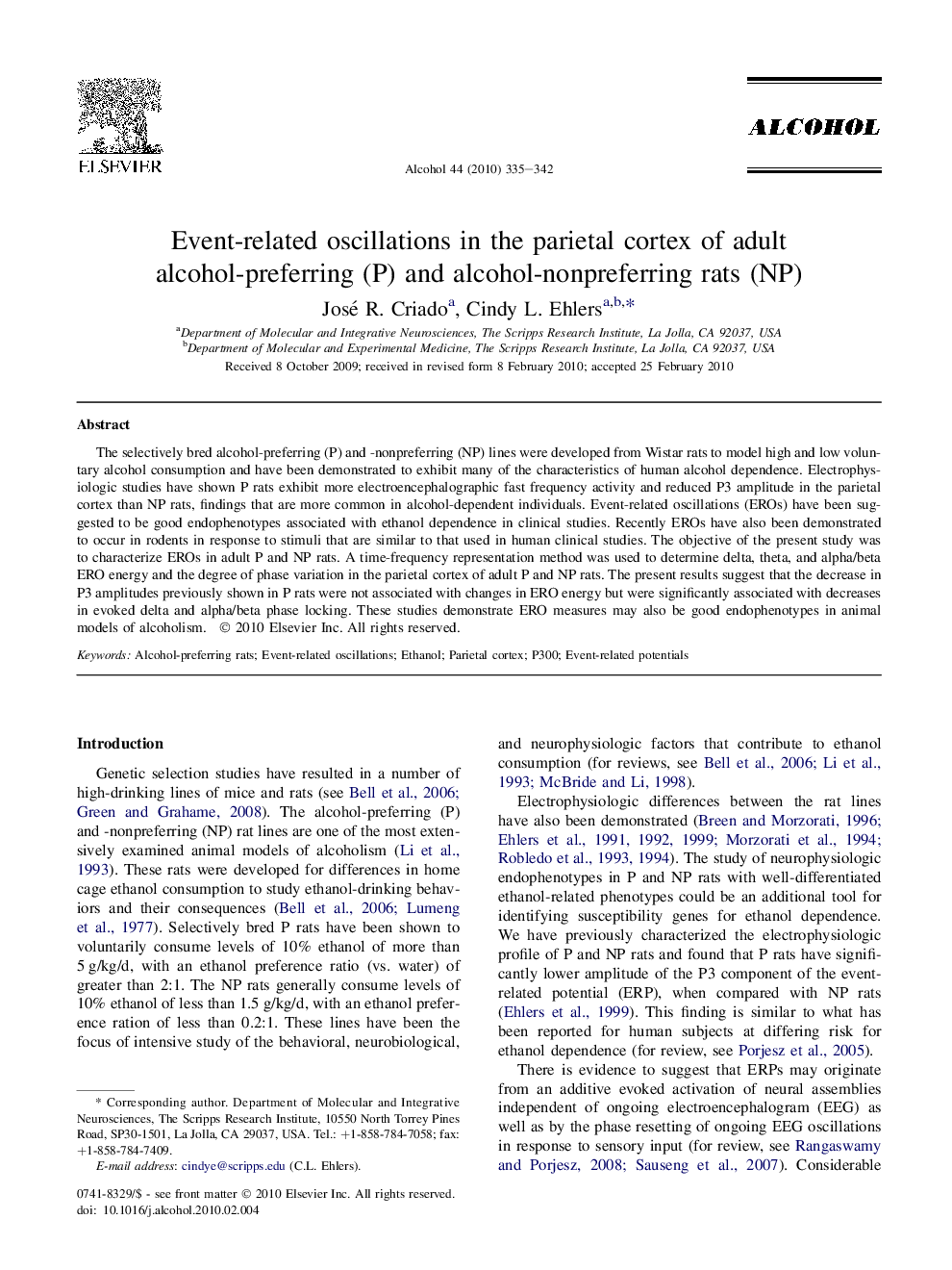| Article ID | Journal | Published Year | Pages | File Type |
|---|---|---|---|---|
| 1067680 | Alcohol | 2010 | 8 Pages |
Abstract
The selectively bred alcohol-preferring (P) and -nonpreferring (NP) lines were developed from Wistar rats to model high and low voluntary alcohol consumption and have been demonstrated to exhibit many of the characteristics of human alcohol dependence. Electrophysiologic studies have shown P rats exhibit more electroencephalographic fast frequency activity and reduced P3 amplitude in the parietal cortex than NP rats, findings that are more common in alcohol-dependent individuals. Event-related oscillations (EROs) have been suggested to be good endophenotypes associated with ethanol dependence in clinical studies. Recently EROs have also been demonstrated to occur in rodents in response to stimuli that are similar to that used in human clinical studies. The objective of the present study was to characterize EROs in adult P and NP rats. A time-frequency representation method was used to determine delta, theta, and alpha/beta ERO energy and the degree of phase variation in the parietal cortex of adult P and NP rats. The present results suggest that the decrease in P3 amplitudes previously shown in P rats were not associated with changes in ERO energy but were significantly associated with decreases in evoked delta and alpha/beta phase locking. These studies demonstrate ERO measures may also be good endophenotypes in animal models of alcoholism.
Keywords
Related Topics
Life Sciences
Biochemistry, Genetics and Molecular Biology
Biochemistry
Authors
José R. Criado, Cindy L. Ehlers,
